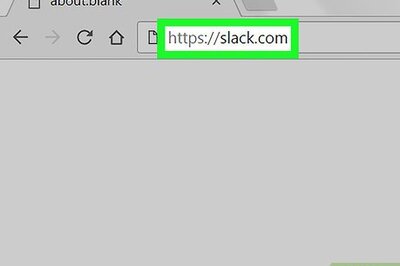
views
WASHINGTON: U.S. officials on Monday unveiled details for the swift distribution of COVID-19 vaccines to millions of Americans after the United States broke records for new coronavirus infections and hospitalizations.
The rampant virus infected 4.36 million more people in November, more than doubling the previous month, as large numbers of Americans still refuse to wear masks and travel for holiday gatherings against the recommendations of health experts.
With outgoing President Donald Trump’s coronavirus strategy relying heavily on a vaccine, the chief adviser of his administration’s Operation Warp Speed program said on Tuesday that 20 million people could be vaccinated by the end of 2020, and that by the middle of 2021 most Americans will have access to highly effective vaccines.
“Within 24 hours, maybe at most 36 to 48 hours, from the approval, the vaccine can be in people’s arms,” Moncef Slaoui, a former GlaxoSmithKline executive, said at an event conducted by The Washington Post.
Operation Warp Speed, charged with accelerating development COVID-19 treatments and vaccines, could help provide the United States with 60 million to 70 million doses per month by January, with vaccines from Pfizer Inc and Moderna Inc, Slaoui said.
A Food and Drug Administration panel of outside advisers will meet on Dec. 10 to discuss whether to recommend that the FDA authorize emergency use of the Pfizer vaccine.
The advisers will consider the Moderna candidate a week later, officials have said. Other pharmaceutical companies, including AstraZeneca Plc and Johnson & Johnson also have vaccines in the works.
The U.S. Transportation Department said on Tuesday it has made preparations to enable the “immediate mass shipment” of COVID-19 vaccines and completed all necessary regulatory measures.
First in line for vaccinations could be about 21 million healthcare workers and 3 million residents in long-term care facilities, the U.S. Centers for Disease Control and Prevention (CDC) has said.
A CDC advisory panel is due to vote on Tuesday afternoon on recommendations for which Americans should get the vaccine first. The CDC will take the panel’s recommendation into account, and then provide guidance to the states to assist governors in their decisions about vaccine distribution priorities.
‘TRAGICALLY FAMILIAR PATTERN’
In the meantime, leading health officials are pleading with Americans to follow their recommendations to help arrest a pandemic that killed more than 37,000 people in the United States in November alone.
A record of nearly 96,000 COVID-19 patients were in hospitals on Tuesday, according to a Reuters tally.
Officials are concerned about the strain on healthcare systems and overworked providers with hospitalization and deaths expected to spike after millions traveled for Thanksgiving last week and with the Christmas holiday season fast approaching.
U.S. COVID-19 deaths are projected to nearly double in December to a pandemic-high of more than 70,000 and climb further to more than 76,000 in January before ebbing in February, according to a widely cited model from the University of Washington’s Institute for Health Metrics and Evaluation.
The monthly U.S. record of 58,740 deaths was set in April.
The pandemic and restrictions meant to stop it have ravaged the U.S. economy, but Congress on Tuesday showed signs of moving forward with long-delayed economic relief.
A bipartisan group of U.S. senators and members of the House of Representatives proposed a $908 billion relief bill that would fund measures through March 31.
U.S. nursing homes are experiencing the worst outbreak of weekly coronavirus cases since the spring, according to the American Health Care Association and National Center for Assisted Living (AHCA/NCAL), a group representing more than 14,000 nursing homes and assisted living facilities in the country.
New York City is seeing a “marked increase” in coronavirus cases and hospitalizations, with hospitals reporting more than 1,100 COVID-19 patients – twice as many as less than three weeks ago and the highest number since early June, Health Commissioner Dr. Dave Chokshi told a news conference on Tuesday.
“This escalation unfortunately follows a tragically familiar pattern – cases grow, hospitalizations follow,” Chokshi said. “And, sadly, too many result in critical illness or even death.”
Chokshi said he is issuing a “commissioner’s notice” urging at-risk New Yorkers to stop non-essential activities and stay in as much as possible as the city fight its second wave of the virus.
New York City Mayor Bill de Blasio encouraged New Yorkers to donate blood, hoping for 25,000 donations in December as the city’s supply dwindled to “just a few days” worth.
“This is really a very, very urgent situation,” de Blasio said.
Disclaimer: This post has been auto-published from an agency feed without any modifications to the text and has not been reviewed by an editor
Read all the Latest News, Breaking News and Coronavirus News here



















Comments
0 comment